OpenLMIS Version 3.3—Foundational Features Supporting Immunization Supply Chains
May 1st, 2018 | viewpoint
The latest release of the OpenLMIS software, version 3.3, is a major accomplishment for the Initiative and for immunization stakeholders globally.
This release is the result of collaboration across organizations and countries to imagine, define, and build standards-based software that truly meets the needs of immunization programs and helps make life-saving vaccines available when and where they’re most needed.
“This release represents the continued effort of the OpenLMIS community to ensure we better meet the needs of public health supply chains including imunization. Our principals of shared value, community and collaboration continue to be reflect in this release. We welcome others to join this community.” – Kaleb Brownlow, Supply Chain Program Officer, Bill & Melinda Gates Foundation
The OpenLMIS 3.3 release debuts a foundational feature set specifically for supporting immunization programs in managing the transactional movements of vaccines and cold chain inventory within multi-level supply chains. New features allow for greater visibility, accountability, and efficiency in vaccine management.
“It is exciting to see that OpenLMIS 3.3 is being released now. JSI participated in the Copenhagen workshop focused on elaborating and prioritizing immunization (EPI) workflows that are being incorporated into version 3.3. We’re quite pleased to see that participants from JSI managed projects in Tanzania, Zambia, and Ethiopia were able to share their actual experiences and materially contribute to the features now incorporated into this version. We believe OpenLMIS 3.3, will offer an open source, comprehensive solution to many countries wanting to automate their logistics processes and operational management of EPI workflows. We’re quite committed to working within the OpenLMIS community to offer JSI implementation services to assist countries to implement OpenLMIS version 3.3.” — Edward Wilson, Director, Logistics Services, JSI
 Visibility: New analytics infrastructure with DISC indicator
Visibility: New analytics infrastructure with DISC indicator
Accountability: Integration with an immunization registry to suggest usage based on the number of vaccinations
Efficiency: View up to date Cold Chain Equipment (CCE) information when sending stock to facilities
The OpenLMIS vision for interoperability is rooted in standards, and the Initiative takes a collaborative approach to achieving end-to-end visibility by interoperating with other systems using industry best practices. With standards-based interoperability, countries can determine which systems are best for which function and which systems should be user-facing without giving up the ability to push and pull data across all systems for critical data for decision making.
“We’re excited to help make our first contribution to OpenLMIS as part of the community. We feel this investment in 3.3 towards establishing a modern analytics foundation will quickly enhance the ability to improve real-time analytics and reporting across the platform. By building this in a modular way, we hope to create value not just to OpenLMIS but health systems reporting in general.” — Matt Berg, CEO, Ona
A Critical Juncture
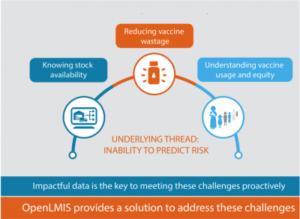 Global momentum to accelerate next-generation immunization supply chains (iSC) has illuminated the need for visible, accessible data in vaccine management.
Global momentum to accelerate next-generation immunization supply chains (iSC) has illuminated the need for visible, accessible data in vaccine management.
Immunization supply chains are facing a time of decreasing resources and increasing risk, underlining the importance of managing data at all levels. In response to consistent requests to add functionality to address the needs of iSC, OpenLMIS is proud to release the first set of vaccine-specific features in the core OpenLMIS software.
“The new OpenLMIS 3.3 vaccine module is an important milestone for the immunization supply chain (iSC). Developed specifically for managing vaccine storage and distribution, and integrating key features on cold chain equipment inventory, functionality, and temperature monitoring, the vaccine module offers countries a robust and open source solution for improved data visibility and iSC performance. The fact that it is integrated into OpenLMIS’s core software for any health product means that EPI programs can collaborate with other programs—RH, HIV, malaria, TB, etc.—to leverage funds for implementation and sustained support.” — Chris Wright, Consultant, Supply Chain Information Systems, Gavi Secretariat
3.3 Vaccine Features
Robust data visualization and analytic infrastructure, cold chain inventory management, integration with a Remote Temperature Monitoring (RTM) platform, and vaccine stock management are some of the key features in the system.
For more details on available features, a 2-page Vaccine Module Overview is available for download.
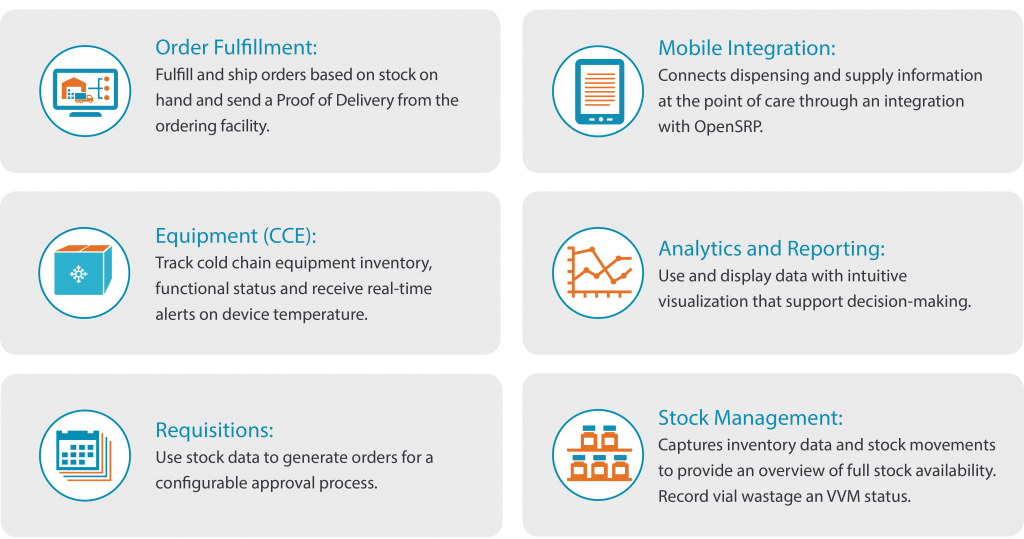
Responsive Design Built on Experience
To build a product that is truly responsive to the needs of end users, the OpenLMIS Community leveraged the experience of its partners in the 3.3 development by building on the accomplishments of previous OpenLMIS EPI implementations, such as VIMS in Tanzania (JSI, VillageReach, CHAI), SELV in Mozambique (VillageReach), and SIIL in Benin (VillageReach, AMP).
OpenLMIS also listened to users through user-centered design workshops and by> engaging global stakeholders in the prioritization of feature sets.
Read: Ask the End User—OpenLMIS and User-Centered Design
Software development partner Soldevelo was a major contributor to the development of the 3.3 feature set, and the broader OpenLMIS Community played a key role in reviewing the product roadmap and new feature development to ensure that end users are heard and the needs of EPI programs globally are met.
“The SolDevelo team has worked closely with VillageReach on the requirements, design, and implementation of the new features in OpenLMIS 3.3 that enable support for vaccines programs and provide extended tools for the fulfillment process. We are proud to have played a significant part in getting this work complete and happy for the opportunity to constantly enhance the OpenLMIS platform.” — Sebastian Brudzinski, SolDevelo
Standards-Based Integration
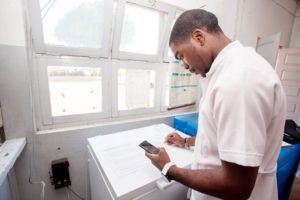
In the 3.3 release, OpenLMIS collaborated with Nexleaf in implementing a system agnostic, standards-based integration between OpenLMIS and a Remote Temperature Monitoring (RTM) platform, ColdTrace.
The integration leverages the Fast Healthcare Interoperability Resource (FHIR) standard, to allow anyone using OpenLMIS to utilize any RTM platform that follows the FHIR standard. This integration provides users with the important information, like, is the cold chain working at the facility? at the right time.
In this release, OpenLMIS has established a proof-of-concept integration with OpenSR, a mobile health application that allows point-of-care staff to register, track immunizations, and record stock levels. This integration demonstrates how OpenLMIS can integrate with frontline mobile applications to reduce the use of paper registries and reporting burdens through digital tools that improve client identification, registration, and inventory management.
Within the OpenLMIS/ OpenSRP workflow, a nurse can see how many vaccinations she has completed that day to suggest the number of vials that were used, linking service delivery and inventory data. She can also address issues of stock availability, wastage, and usage and equity.
Data Analytics and Reporting
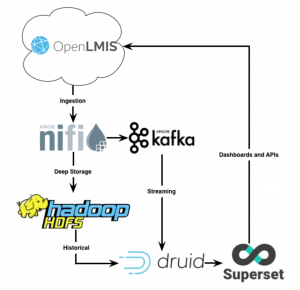 To address end-to-end visibility and risk management across systems, OpenLMIS, through collaboration with Ona, has invested in an open-source analytics infrastructure that can support:
To address end-to-end visibility and risk management across systems, OpenLMIS, through collaboration with Ona, has invested in an open-source analytics infrastructure that can support:
With this tech stack and infrastructure, data captured from multiple sources including OpenLMIS can be aggregated, merged, cleaned, and organized in a way that allows for near-real-time visualizations either with this new analytics infrastructure or by leveraging a third party business intelligence tool (such as Tableau) already in use in the country.
Implementer Toolkit
The OpenLMIS Community has also released the first iteration of an Implementer Toolkit—a single source of information and resources for users to both contribute to and reference when thinking about or planning to implement an electronic LMIS.
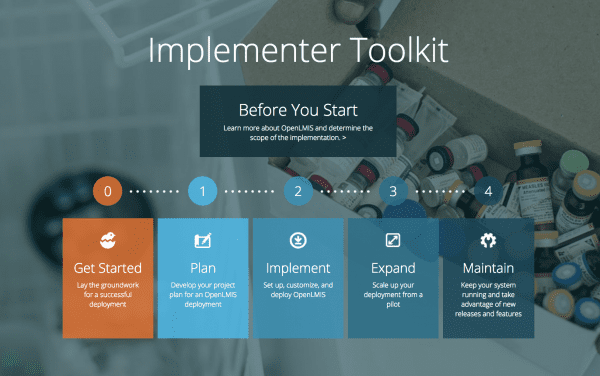
“As an organization with a deep history working with governments to improve vaccine coverage rates, VillageReach is extremely excited about the new features in this release. We have seen first-hand the need to improve the toolset available to countries looking to improve the data they have about vaccine availability from warehouse to last mile. Improved reporting functionality and the ability to link supply chain data with service delivery data is an important tool to meeting vaccine coverage and equity goals.”— Emily Bancroft, President, VillageReach
OpenLMIS would not be where it is today without the support of all partners and donors, and we are incredibly grateful for their continued guidance and participation in this growing initiative.
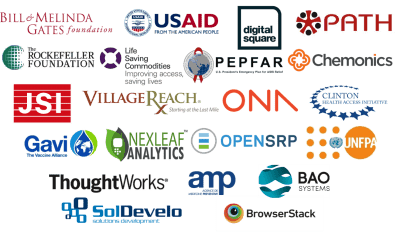
See the 3.3 Release Notes for the full details of the release and download the Vaccine Module Overview.
———
The OpenLMIS Initiative’s mission is to make powerful LMIS software available in low-resource environments – providing high-quality logistics management to improve health commodity distribution in low- and middle-income countries. OpenLMIS increases data visibility, helping supply chain managers identify and respond to commodity needs, particularly at health facilities where lack of data significantly impacts the availability of key medicines and vaccines.
Learn more at openlmis.org, or by writing to info@openlmis.org
*This post was originally published on April 30, 2018, on OpenLMIS.
Written by Mary Jo Kochendorfer and Tenly Snow
We strive to build lasting relationships to produce better health outcomes for all.